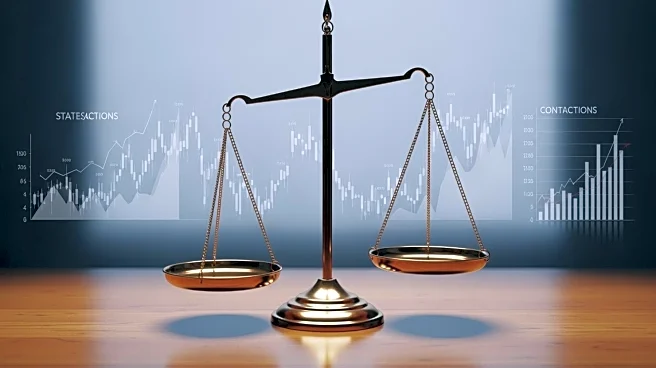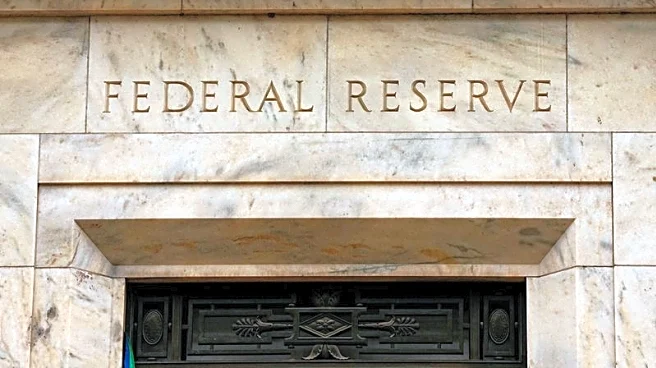What's Happening?
The Federal Reserve is expected to cut U.S. short-term borrowing costs by a quarter of a percentage point this week, marking the second rate cut this year. This decision comes as the Fed aims to prevent
further slowing in the labor market, with unemployment insurance claims suggesting cooling demand. Inflation readings have been milder than expected, reducing concerns about tariff-driven price pressures. The Fed's post-policy-meeting statement has hinted at additional rate adjustments, and financial markets are anticipating further cuts in December and January.
Why It's Important?
Interest rate cuts by the Federal Reserve are significant as they influence borrowing costs for consumers and businesses, impacting economic growth and stability. Lower rates can stimulate economic activity by making loans cheaper, encouraging spending and investment. However, they also pose risks of inflation if not managed carefully. The Fed's decision reflects its response to economic indicators and pressures, including political pressure from the Trump administration for lower rates. The outcome will affect financial markets, consumer confidence, and the broader economy.
What's Next?
The Fed's upcoming meeting will provide further guidance on its monetary policy direction, with potential signals about future rate cuts. The decision will be closely monitored by markets and policymakers, as it will influence economic forecasts and investment strategies. The Fed may also discuss its balance sheet strategy, with potential implications for financial markets. The ongoing government shutdown and global trade discussions could also impact the Fed's policy decisions in the coming months.












